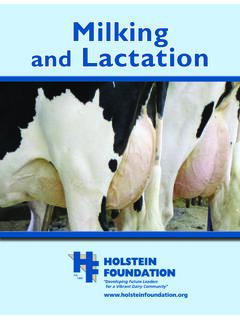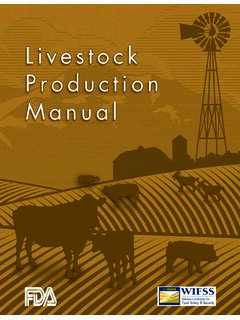Transcription of Components of human breast milk: from macronutrient to ...
1 Review article CEP Vol. 63, No. 8, 301 309, 2020. Components of human breast milk: from macronutrient to microbiome and microRNA. Su Yeong Kim, MD1, Dae Yong Yi, MD, PhD1,2. 1. Department of Pediatrics, Chung-Ang University Hospital, Seoul; 2 College of Medicine, Chung-Ang University, Seoul, Korea uman breast milk (HBM) is essential for the infant's growth H Introduction and development right after birth and is an irreplaceable source of nutrition for early human survival. Various infant formulas human breast milk (HBM) is essential for the infant's growth have many similarities to HBM in many Components , but there and development right after birth and is an irreplaceable source is no perfect substitute for HBM. Recently, various breast milk of nutrition for early human ,2) For this reason, the Components and their roles have been studied according to World Health Organization and United Nations Children's the development of various analysis techniques.
2 As is already Fund recommend exclusive HBM feeding for at least 6 months well known, HBM contains about 87% 88% water, and 124- after birth and to continue for up to 2 years of age or ). g/L solid Components as macronutrients, including about 7% In recent years, various infant formulas have been developed (60 70 g/L) carbohydrates, 1% (8 10 g/L) protein, and for greater similarity to HBM and are being supplemented (35 40 g/L) fat. The composition may vary depending on the with breast milk-specific ingredients, such as human milk oligo . environmental factors, including maternal diet. colostrum saccharide (HMO).6-8) Although these formulas are similar to is low in fat but high in protein and relatively rich in immune- HBM in terms of many Components , there is no perfect sub.
3 Protective Components . Although HBM contains enough stitute for ) This makes it imperative to discuss the com . vitamins to ensure normal growth of the infant, vitamins D ponents that make HBM more suitable than infant formulas and K may be insufficient, and the infant may require their for humans. Many studies to date have revealed nutritional supplementation. Growth factors in HBM also serve as various Components , such as various macronutrients and micronutrients, bioactive proteins and peptides on the intestinal tract, vascula in HBM and have studied about its immunologic Components . ture, nervous system, and endocrine system. In the past, HBM In addition, recently, various HBM Components and their of a healthy mother was thought to be sterile. However, se roles have been studied with the implementation of various veral subsequent studies have confirmed the presence of rich analysis techniques, such as next-generation sequencing.
4 In and diverse microbial communities in HBM. Some studies this article, we will explore the various Components of HBM. suggested that the genera Staphylococcus and Streptococcus A better understanding of these HBM Components will help may be universally predominant in HBM, but the origin of in various aspects, such as imparting lactation education and microbiota still remains controversial. Lastly, milk is the one of encouraging better feeding habits, as well as in the treatment of most abundant body fluid of microRNAs, which are known high-risk infants, such as those with premature birth, infections, to play a role in various functions, such as immunoprotection neurological diseases, and gastrointestinal diseases. and developmental programming, through delivering from HBM and absorption by intestinal epithelial cells.
5 In conclusion, HBM is the most important source of nutrition for infants and Nutrient composition in HBM. includes microbiomes and miRNAs for growth, development, and immunity. 1. Macronutrients As is already well known, HBM contains about 87% 88%. Key words: human milk, Infant, Nutrient, Microbiota, water, and it has a specific gravity of , osmolarity of about MicroRNA 286 mOsm/L, and 124-g/L solid Components as macronutri ents, including about 7% (60 70 g/L) carbohydrates, 1% (8 10 g/L). protein, and (35 40 g/L) fat10-13) (Table 1). Typically, mature milk contains 65 70 kcal per 100 mL of energy, and about 50%. of the total calorie supply is fat and 40% is ). Corresponding author: Dae Yong Yi, MD. Department of Pediatrics, Chung-Ang University Hospital, 102 Heukseok-ro, Dongjak-gu, Seoul 06973, Korea E-mail: Received: 7 January, 2020, Revised: 16 March, 2020, Accepted: 19 March, 2020.
6 This is an open-access article distributed under the terms of the Creative Commons Attribution Non-Commercial License ( ) which permits unrestricted non-commercial use, distribution, and reproduction in any medium, provided the original work is properly cited. Copyright 2020 by The Korean Pediatric Society However, unlike infant formulas, which have a narrow range 1) Carbohydrates of composition guidelines based on strict criteria for health Carbohydrates are the most prominent macronutrient in HBM. effects on infants, the nutrient composition of HBM is dynamic and plays an important role in infant's nutrition, in developing for various ) The composition of HBM may vary the physiological function of the entire gastrointesti nal tract right depending on the maternal diet, mammary gland physiology, from birth, and in maintaining the composition of the intestinal maternal health, and many other environmental ,14) In ,21) most humans ingest carbohydrates in the form addition, it may vary depending on prematurity, on whether it of glucose, whereas infants, who have not yet de veloped the is foremilk or hindmilk, and on whether it is colostrum , transi gastrointestinal tract, ingest carbohydrates in the form of lactose.
7 Tional milk, or mature ) It may vary depending on the Thus, lactose is the major carbohydrate constituent of HBM and processing conditions, such as storage, pasteurization, and con is the most abundant nutrient in breast milk. Lactose is digested ,19) In the case of foremilk released by the mammary by lactase-phlorizin hydrolase, also called lactase, which is pre . gland, the fat content is relatively low and increases with feeding, sent on the apical surface of enterocytes in the small intestinal whereas hindmilk has higher fat content. The protein and lactose brush border; lactose is readily digested in almost all ). contents are not significantly different between them. colostrum However, the lack of enzymes can cause various symptoms, such is low in fat but high in protein (10%) and is relatively rich in as lactose intolerance or malabsorption.
8 Unlike protein and fat, immune-protective Components , such as immunoglobulin A colostrum contains rela tively fairly constant lactose with ,22). (IgA) and lactoferrin, which help prevent neonatal infections. A constant level of lactose is important for maintaining a constant osmotic pressure in HBM. In addition, carbohydrate-based bio . 1. Nutritional Components human breast Milk Protein Lactose colostrum Fat Protein vs. HMO Lactose Mature breast milk . Fat HMO. 2. Minerals and Vitamins colostrum Mature breast milk recommended level Vitamin D & K are deficient in human breast milk 3. Hormones and Growth factors EGF, IGF-1/2, VDGF, Epo, Adiponectin BDNF, GNDF, CNTF. 4. Microbial communities Staphylococcus, Streptococcus, Lactobacillus, Propionibacterium 5. microRNAs help constructing infants immune system through intestine Graphical abstract.
9 human breast milk (HBM) contains macronutrients and micronutrients, and its composition varies according to environmental factors. colostrum is low in fat but high in protein and relatively rich in immunoprotective Components . Micronutrients, hormones, and growth factors in HBM. also play various roles in infant development. Microbial communities and microRNAs help construct the infant immune system. Table 1. Energy and macronutrient composition of human breast milk and proposed composition recommended in cow milk formula Colostruma) Mature milka) Bovine formulab). Variable (1 5 days) ( >14 days) (minimum maximum). Energy 50 60 kcal/100 mL 65 70 kcal/100 mL 60 70 kcal/100 mL. Carbohydrate 50 62 g/L 60 70 g/L g/100 kcal Lactose 20 30 g/L 67 70 g/L. Oligosaccharides 20 24 g/L 12 14 g/L.
10 Total protein 14 16 g/L 8 10 g/L g/100 kcal Total fat 15 20 g/L 35 40 g/L g/100 kcal a). The range of each Components is slightly different according to studies. b)Codex standard for infant formula and formulas for special medical purposes intended for infants (Codex Stan 72-1981, Amendment: 2016). 302 Kim SY, Yi DY. Components of human breast milk active Components , such as oligosaccharides, are attached to present in ,36) Casein of HBM is more easily digested in lactose; this aids in the absorption of minerals and ) The the form of looser micelles and softer curd by carboxypeptidase, levels of free glucose and other glucose metabolites in HBM are which regulates intestinal motility and aids calcium absorption. low; thus, their nutritional significance is negligible in ) L nnerdal et ) reported that low casein proportion in Highly complex HMOs are the second most abundant car HBM is associated with slower growth in breastfed infants.


